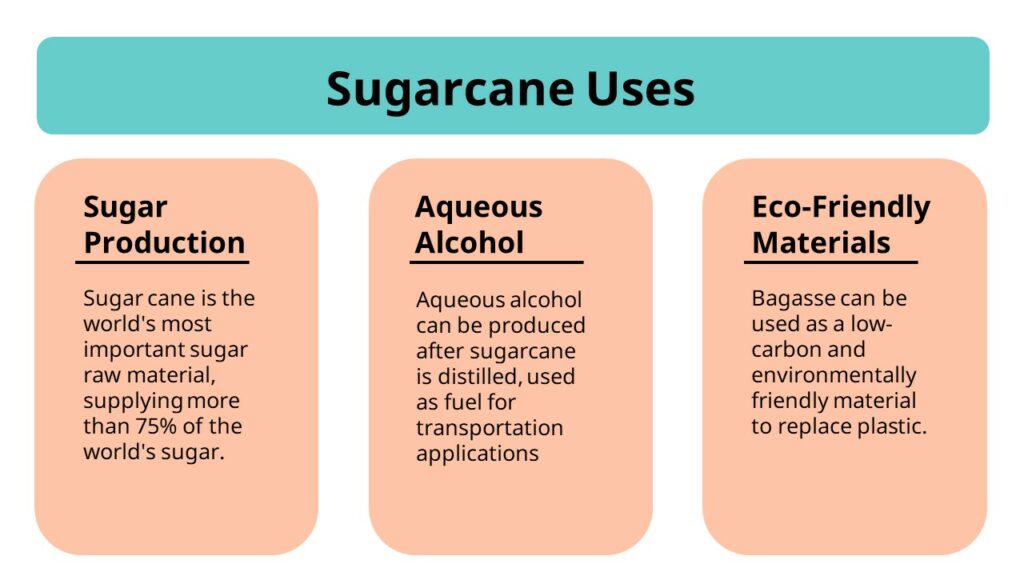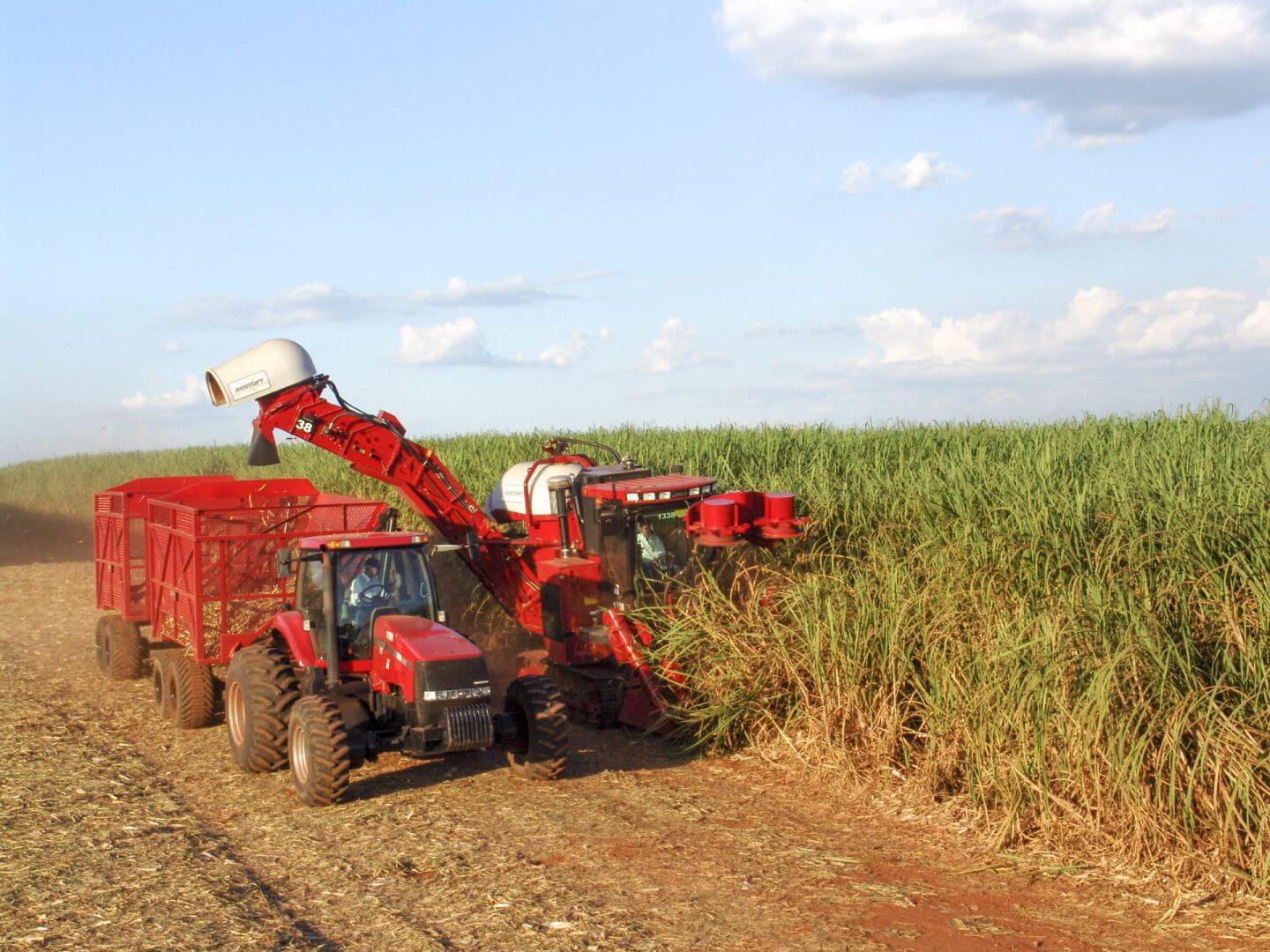Checking Out the Total Line of Process Chemicals: What Are Sugar Canes Used For in Manufacturing?
Sugar walking sticks play an essential role in different manufacturing processes, functioning as a functional basic material. Their high sucrose web content makes them essential in the food market, while innovations in biofuels and biodegradable plastics highlight their potential past traditional usages. In addition, sugar walking cane extracts are obtaining recognition in pharmaceuticals and nutraceuticals for their health advantages. The complex applications of sugar canes raise interesting questions concerning their future in industrial industries. What chances lie in advance?

The Trip of Sugar Cane: From Field to Manufacturing facility
As the sunlight increases over vast fields, the journey of sugar walking stick starts, marked by precise farming and collecting processes. Farmers select excellent varieties, guaranteeing robust growth in appropriate climates. Normal irrigation and nutrient management are crucial, advertising healthy stalks rich in sucrose. When mature, the walking cane is collected, commonly using mechanical cutters that successfully collect the stalks.Once collected, the sugar cane is delivered to refining facilities where it undertakes grating and washing to remove juice. This juice is after that clarified, removing impurities with sedimentation and purification. The clear liquid is concentrated by dissipation, and ultimately taken shape to produce raw sugar.Throughout this trip, quality assurance is vital, guaranteeing that the final item fulfills sector criteria. The transformation of sugar walking cane right into raw sugar highlights a complicated interaction of farming and manufacturing, establishing the phase for its diverse applications in numerous sectors.
Biofuels: Harnessing Power From Sugar Cane
A significant portion of the globe's biofuel production is acquired from sugar walking cane, which acts as a renewable resource source. This versatile plant is primarily processed to draw out sucrose, which can be fermented to create ethanol. Ethanol originated from sugar cane is not just a clean-burning gas choice but additionally contributes to lowering greenhouse gas emissions compared to traditional nonrenewable fuel sources. In countries like Brazil, sugar cane biofuel has actually become a considerable part of the energy matrix, powering vehicles and minimizing dependence on imported oil. The cultivation of sugar walking stick for biofuels likewise supports country economies, offering work in farming and handling. Furthermore, the spin-offs of sugar cane processing, such as bagasse, are used in energy generation, more improving the sustainability of the manufacturing cycle. Overall, sugar walking stick biofuels represent an appealing opportunity for achieving power independence while fostering ecological stewardship.
Biodegradable Plastics: The Lasting Remedy
What if the option to the global plastic situation lies in naturally degradable choices? Naturally degradable plastics, stemmed from renewable energies such as sugar walking canes, provide an innovative method to reducing plastic waste. Unlike traditional plastics, which can take centuries to disintegrate, these green products break down normally, reducing ecological impact.The manufacturing of eco-friendly plastics includes using sugars from sugar walking canes to develop polylactic acid (PLA) and various other biopolymers. These products preserve comparable functionality to traditional plastics, making them suitable for different applications, consisting of packaging, utensils, and farming films.As consumers and markets shift towards sustainability, eco-friendly plastics supply a compelling choice. They not only reduce dependence on nonrenewable fuel sources yet likewise sustain a circular economic climate by returning to the planet without leaving damaging residues. The increasing need for such materials signals a significant action toward resolving the pressing need for even more lasting production services despite environmental obstacles.
Sugar Cane Essences in Pharmaceuticals and Nutraceuticals

The Future of Sugar Walking Cane in Industrial Applications
As markets remain to look for sustainable and sustainable resources, sugar walking cane is positioned to play an essential function in numerous industrial applications past its standard usage in sugar manufacturing. Its biomass offers an eco-friendly source for biofuels, decreasing dependence on nonrenewable fuel sources and adding to reduced carbon emissions. In addition, sugar walking cane's spin-offs, such as bagasse and molasses, are being checked out for their capacity in bioplastics and biodegradable materials, resolving the growing demand for eco-friendly product packaging solutions.Research is also underway to boost the effectiveness of sugar walking stick derivatives in different industries, consisting of textiles, cosmetics, and building. By harnessing the one-of-a-kind residential properties of sugar cane, manufacturers can create ingenious items that check it out straighten with customer choices for sustainability. As innovation advancements, the versatility of sugar walking cane will likely expand, solidifying its placement as a crucial gamer in the shift toward an extra lasting commercial landscape.

Frequently Asked Concerns
What Is the Refine of Refining Sugar Cane Into Sugar?
The process of refining sugar walking cane into sugar includes harvesting, squashing to remove juice, making clear the juice, evaporating water, crystallizing sugar, and ultimately drying and packaging the fine-tuned product for circulation and usage. (What Are Sugar Canes Used For)
Exactly How Does Sugar Walking Stick Impact Local Economies?
Sugar walking cane significantly affects regional economic climates by developing jobs, boosting agricultural production, and creating profits through exports. Its growing sustains tiny farmers and regional businesses, fostering neighborhood development and improving total financial stability in sugar-producing areas.
Exist Any Type Of Ecological Interest In Sugar Walking Cane Farming?
Environmental worries related to sugar walking cane farming consist of deforestation, dirt degradation, water use, and pesticide drainage (What Are Sugar Canes Used For). These issues effect neighborhood environments and add to climate adjustment, prompting ask for even more lasting farming methods within the sector
What Are the Nutritional Perks of Sugar Cane?
The dietary advantages of sugar cane include its abundant material of vitamins, antioxidants, and minerals. It offers natural power, supports hydration, and might help digestion, adding positively to overall wellness when consumed in moderation.
Just How Does Sugar Walking Stick Contrast to Other Crops in Sustainability?
Sugar walking cane shows higher sustainability compared to lots of plants due to its reliable use land and water sources, ability to produce biofuels, and possibility for carbon sequestration, adding positively to ecological health and wellness and agricultural techniques. When fully grown, the walking stick is harvested, frequently making use of mechanical cutters that efficiently collect about his the stalks.Once gathered, the sugar walking cane is delivered to refining facilities where it undergoes washing and grating to remove juice. Unlike conventional plastics, which can take centuries to decay, these green materials break down normally, reducing environmental impact.The production of naturally degradable plastics entails using sugars from sugar walking sticks to create polylactic acid (PLA) and various other biopolymers. Usually recognized for their role in sugar manufacturing, sugar walking cane removes are progressively discovering applications in the nutraceutical and pharmaceutical sectors. As sectors continue to look for lasting and renewable sources, sugar walking cane is poised to play a pivotal role in numerous commercial applications beyond its traditional usage in sugar production. Furthermore, sugar walking cane's byproducts, such as bagasse and molasses, are being explored for their potential in bioplastics and biodegradable materials, addressing the expanding demand for eco friendly packaging solutions.Research is likewise underway to improve the performance of sugar walking cane derivatives in numerous industries, including textiles, cosmetics, and construction.